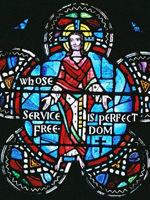 In his book The Victorian Internet, Tom Standage makes an unexpected comparison -- he likens the Internet to the telegraph. Both technologies crossed vast distances in seconds, revolutionized business practices, relied on professionals who could "code," saw friendship and romance among people who'd never met, and spurred a technological and entrepreneurial frenzy. At the book's end, Standage makes a point crucial for understanding today's information technology environment. The telegraph was nothing compared to the technology it enabled: the telephone. Once the power of the network was available to individuals who no longer needed the intermediaries at the telegraph office, the true revolution began.
In his book The Victorian Internet, Tom Standage makes an unexpected comparison -- he likens the Internet to the telegraph. Both technologies crossed vast distances in seconds, revolutionized business practices, relied on professionals who could "code," saw friendship and romance among people who'd never met, and spurred a technological and entrepreneurial frenzy. At the book's end, Standage makes a point crucial for understanding today's information technology environment. The telegraph was nothing compared to the technology it enabled: the telephone. Once the power of the network was available to individuals who no longer needed the intermediaries at the telegraph office, the true revolution began.
Gordon-Conwell Theological Seminary's president emeritus, Robert E. Cooley, has thought deeply and broadly about the shifting technological environment, and he sees paradigm shifts. It's not just that IT has increased our capacity and productivity -- it's that the way we relate to work -- and to one another-- has changed. Cooley says that "boards tend to operate at the apex of an industrial-age pyramid of authority that collapses under technology," and that the old system, which relied on a hierarchy of function, is in the process of giving way.
To understand this, consider the first paradigm shift -- one that Cooley describes as the move "from teaching to learning." Under the old system, seminaries controlled the flow of information, housed the texts, and taught students what they'd need to know to receive the school's seal of approval. Now, libraries of information are available to anyone with a laptop. Although professors still lecture, they are not the fonts of information they once were. Rather, they have become guides and mentors to proactive learners who are often more adept at information gathering than their guides!
This shift from reference to relationship, from gatekeeper to green-lighter, has profound implications for the board as it charts its school's course. The mission of any seminary is to train people who will lead churches, and the relationship between these emerging leaders and the faculty is at the very heart of that mission. But how do we shape those who are no longer reliant upon us for access to information?
Once upon a time, every action a student took within the institution was overseen by an administrator residing somewhere on the organizational pyramid -- to pay a bill, the student went to the bursar's office; to request a transcript, the student visited the registrar. But now it's possible for students to communicate with and function within the institution on their own, without a human guide, via a school's Web site, e-mail, online course registration, and databases.
But not all seminaries are gaining the huge savings made possible by taking advantage of the comfort students already have with online interaction. Seminaries might take a clue from airlines, banks, and hotels, all of which have electronic "self-help environments" that offer round-the-clock convenience for the user and eliminate the need for repetitive data entry by the institution. It's already possible for students to enroll and register, apply for financial aid, make academic inquiries, and make use of financial services online, and Cooley goes as far as recommending that a school undergo a work audit, identifying tasks performed and relating these functions systematically to reveal core processes. This also speaks to mission as the audit goes, task by task to the real nuts and bolts of what you do.
As the pyramid flattens, Cooley insists that boards must seek a cross-functional approach to decision making. In the world of business, this method brings team members with different areas of expertise together to achieve a common goal. Brought to a theological school board, this way of thinking envisions an array of the experts with experience well beyond the seminary. No longer limited to the administrative expertise already found in the school, the cross-functional approach brings new competencies to the long view boards are required to take.
Gordon-Conwell's experience with satellite campuses provides examples. Its board has had to ask about the extent that the tools of distance learning have been made available to in-house learners, whether this shift has changed the relationship of the learner to the campus, and what implications this shift has for building management. The board has grappled with the question of whether a satellite campus requires new faculty and whether these new arrangements change their perspective on full-time enrollment. The very asking of the questions moves the board from offering just fiduciary oversight to thinking strategically and even generatively. (For more on fiduciary, strategic, and generative thinking, see "Rethinking the Board's Central Purposes" in the Autumn 2005 issue of In Trust.)
While board members are, of course, bound by the corporate nature of their authority, these paradigm shifts have transformed their roles too -- they can interact with the institution online, as students do, in their critical quest for information. Between meetings, they can monitor dashboard indicators (for more on dashboard indicators, see "Toolbox: Pulling Together on Behalf of the School" in the Spring 2005 issue of In Trust) and dig behind the numbers to the functions they represent. They can explore new avenues for the school to achieve its mission with economic vitality. They can ask the questions that reveal the gaps and overlaps. They can bypass Western Union and simply pick up the phone.